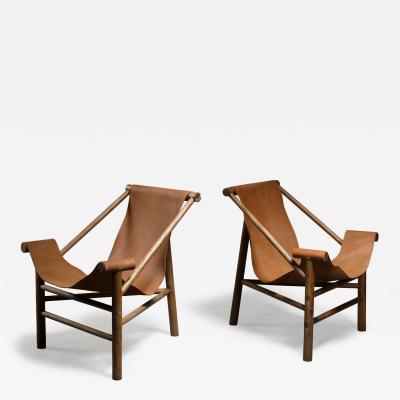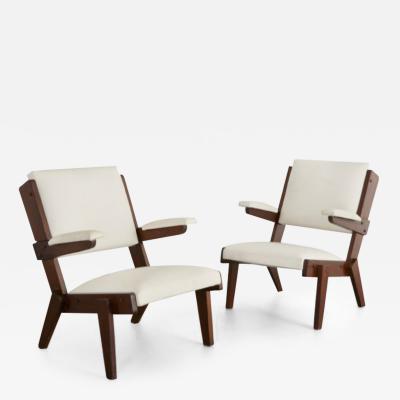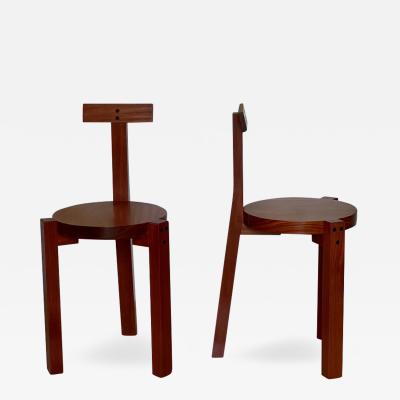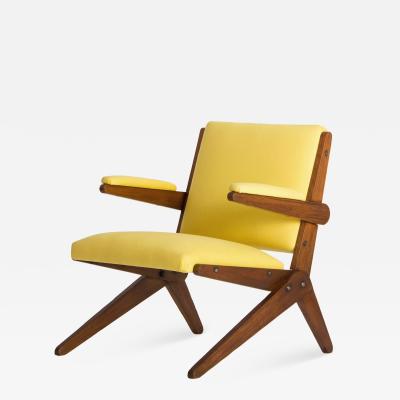Lina Bo Bardi
Brazilian, 1914 - 1992
Lina Bo Bardi (December 4, 1914 – March 20, 1992) was one of the most important and expressive architects of 20th century Brazilian architecture. Born in Italy as Lina Achillina Bo, she studied architecture at the University of Rome, moving to Milan after graduation. In Milan, Bo Bardi collaborated with Gio Ponti, and later become editor of the magazine Quiaderni di Domus.
With her office destroyed in World War II Bo Bardi, along with Bruno Zevi, founded the publication A Cultura della Vita. As a member of the Italian Communist Party, she met the critic and art historian Pietro Maria Bardi, with whom she would move permanently to Brazil.
Sesc Pompéia. Image © Pedro KokSão Paulo Museum of Art (MASP). Image © Pedro KokSão Paulo Museum of Art (MASP). Image © Pedro KokSesc Pompéia. Image © Pedro KokSpotlight: Lina Bo Bardi - More Images+ 4
Save this picture!Image courtesy ofInstituto Lina Bo e P.M. Bardi
In Río de Janeiro, with its lush surroundings and modernist constructions, Bo Bardi began to assimilate these new influences, a process that would culminate when they moved to São Paolo. She began to study Brazilian culture from an anthropological perspective and was particularly interested in the convergence of art and popular tradition.
Save this picture!Glass House. Image © Thiago Esperandio viaFlickr user ministeriodacultura licensed under CC BY 2.0
In 1950 she started the magazine Habitat, and in 1951 she designed her home, the Glass House, in Morumbi, Sao Paulo; the house is considered one of the paradigmatic works of rationalist art in Brazil. Later, in 1957, she began to construct the new home of the Museum of Art Sao Paulo (MASP), where she suspended the building above a 70-meter-long square.
Save this picture!São Paulo Museum of Art (MASP). Image © Pedro Kok
Moving to Salvador in order to direct the Museu de Arte da Moderna da Bahia, Bo Bardi continued to design emblematic projects—including the restoration of the Solar do Unhão in 1940, the Chame-Chame House in 1964 the Sesc Pompéia in 1977, and the Teatro Oficina in 1984.
Save this picture!Sesc Pompéia. Image © Pedro Kok
However, her work was not exclusive to architecture; she was also engaged in scenery production, art, furniture and graphic design. Bo Bardi passed away in 1992, with many ongoing projects left unfinished.
With her office destroyed in World War II Bo Bardi, along with Bruno Zevi, founded the publication A Cultura della Vita. As a member of the Italian Communist Party, she met the critic and art historian Pietro Maria Bardi, with whom she would move permanently to Brazil.
Sesc Pompéia. Image © Pedro KokSão Paulo Museum of Art (MASP). Image © Pedro KokSão Paulo Museum of Art (MASP). Image © Pedro KokSesc Pompéia. Image © Pedro KokSpotlight: Lina Bo Bardi - More Images+ 4
Save this picture!Image courtesy ofInstituto Lina Bo e P.M. Bardi
In Río de Janeiro, with its lush surroundings and modernist constructions, Bo Bardi began to assimilate these new influences, a process that would culminate when they moved to São Paolo. She began to study Brazilian culture from an anthropological perspective and was particularly interested in the convergence of art and popular tradition.
Save this picture!Glass House. Image © Thiago Esperandio viaFlickr user ministeriodacultura licensed under CC BY 2.0
In 1950 she started the magazine Habitat, and in 1951 she designed her home, the Glass House, in Morumbi, Sao Paulo; the house is considered one of the paradigmatic works of rationalist art in Brazil. Later, in 1957, she began to construct the new home of the Museum of Art Sao Paulo (MASP), where she suspended the building above a 70-meter-long square.
Save this picture!São Paulo Museum of Art (MASP). Image © Pedro Kok
Moving to Salvador in order to direct the Museu de Arte da Moderna da Bahia, Bo Bardi continued to design emblematic projects—including the restoration of the Solar do Unhão in 1940, the Chame-Chame House in 1964 the Sesc Pompéia in 1977, and the Teatro Oficina in 1984.
Save this picture!Sesc Pompéia. Image © Pedro Kok
However, her work was not exclusive to architecture; she was also engaged in scenery production, art, furniture and graphic design. Bo Bardi passed away in 1992, with many ongoing projects left unfinished.
Lina Bo Bardi
SESC Stools by Lina Bo Bardi for SESC Pompeia, Brazil, 1970s
H 26 in W 14 in D 21 in
$ 34,800
Lina Bo Bardi
Mid-Century Modern Set of 2 "Girafa" Chairs by Lina Bo Bardi, Brazil, 1986
H 31.1 in W 17.32 in D 15.35 in
$ 8,000
